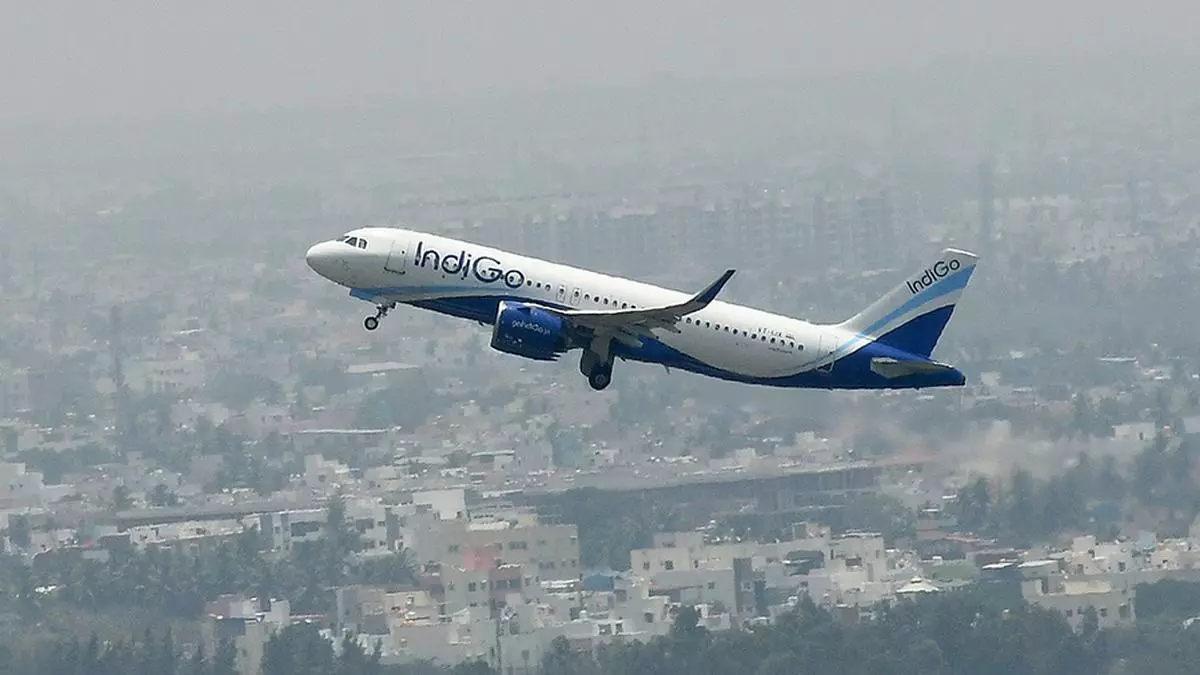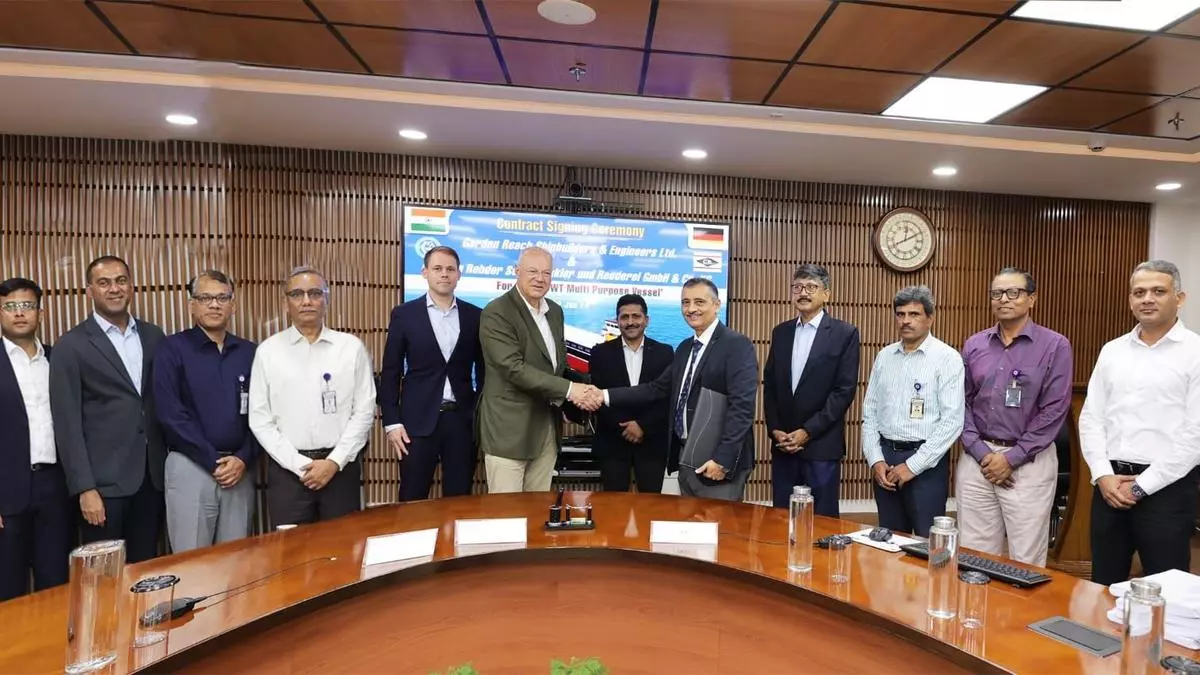Last summer IndiGo unveiled its most ambitious overseas expansion yet connecting cities in Central Asia and East Africa. India’s largest airline was finally stepping out of its comfort zones of the sub-continent and West Asia. It posted a record ₹3,090 crore net profit for the first quarter FY24. It looked like the rest of the year would be smooth sailing for IndiGo, with rival Go First suspending its operations in May and SpiceJet beset with problems.
But then came a spoiler as Pratt & Whitney called for accelerated inspections of the engines that power IndiGo’s Airbus A320Neo fleet. Between the second and third quarter, the number of grounded IndiGo aircraft doubled to over 70.
Yet, despite all the challenges, the airline has managed to fly high. It flew over a hundred million passengers, reported its highest ever annual revenue of ₹71,200 crore and a net profit of ₹8,172 crore in FY24 reversing the negative result of the previous year.
“We have not changed our capacity guidance at any point in the last year. We said it (capacity growth) will be north of mid-teens and we delivered that. We have now said it will be in the early double digits and I am confident we will deliver that,” IndiGo’s CEO Pieter Elbers told media persons last week.
Out of the clouds
Elbers said IndiGo was able to deliver good financial performance because it was able to stick to its capacity guidance. Lower fuel costs and compensation received from the engine manufacturer also helped in shoring up the net profit.
On its part, IndiGo took a host of mitigating measures to overcome the bottleneck such as lease extensions and inducting extra aircraft on dry/damp lease from foreign operators. In a damp lease, an operator provides pilots and maintenance engineers along with the aircraft to the lessee. In the last fiscal, IndiGo inducted 65 aircraft including 12 aircraft on damp lease. Its total fleet count stood at 367 as of March-end. With an order book of nearly 1,000 planes, the airline also expects to receive one aircraft every week for the next few years.
Having negotiated the supply chain challenges, the airline is now pushing the joystick for growth. The airline has added 22 destinations since September 2022, taking the total cities served to 121. It plans to add 10 more domestic and foreign destinations in the current financial year and is also upping flight frequency to Almaty (Kazakhstan), Tashkent (Uzbekistan) and Tbilisi (Georgia) from August, driven by strong demand for leisure travel. While the international traffic market is growing faster than domestic, Indian travellers are also exploring newer destinations, Elbers said.
Travel surge
Rajeev Kale, president and country head of holidays at Thomas Cook (India), concurs. “Short haul destinations with easy visa regimes are not just powering India’s travel story but are now serving to extend the traditional season into a year-round opportunity. Our consumer data for Central Asian destinations reflects an unprecedented demand uptick of 300-600 per cent on a year-on-year basis,” he said.
On the domestic side too, there has been growth. “IndiGo saw a drop of 95 domestic departures per day in January, on a month-on-month basis, due to an increase in the number of grounded aircraft. However, it was a momentary blip. In March, the airline even surpassed its December figure and with over 1,780 daily flights April saw even higher domestic deployment,” said Ameya Joshi, founder of aviation blog Network Thoughts.
While it is widening its own network, IndiGo is also forging partnerships with foreign airlines. The airline has code share alliances with eight airlines. Apart from getting passenger feed, it is also creating brand awareness for IndiGo in international markets.
These partnerships are two-fold — one where a foreign carrier (Air France-KLM, Virgin Atlantic, Japan Airlines) places its code on IndiGo’s domestic flight. In the second type of collaboration – IndiGo flies to a destination in its partner airline’s network. “For instance, what we do with Qantas is that we fly from seven cities in India to Singapore and allow passengers to connect on Qantas flights from there,” Elbers said.
Its partnership with Turkish Airlines is on similar lines as it flies from Mumbai and Delhi into Istanbul and provides onward connections to Europe and the US.
Creating brand awareness will be crucial as IndiGo begins receiving its Airbus A321XLR aircraft next year. With additional fuel capacity and higher maximum take-off weight, the aircraft will enable IndiGo to open up routes in Europe and farther away in Asia. Currently the airline’s longest route is Bengaluru-Denpasar (Bali) which is around 4,800 kilometres. The Mumbai-Istanbul route is longer than the Bali route but it is operated using a damp leased Turkish Airlines’ Boeing 777 aircraft.
Further expansion will happen from 2027 when the airline receives its widebody Airbus A350 aircraft. In April, IndiGo signed an order for 30 A350 aircraft that will enable it to fly to the US in the West and Australia in the East.
Product changes are happening too. Since last month IndiGo began trails for app-based entertainment on the Delhi-Goa sector.
“We call it on-app entertainment which is an innovative IndiGo way of doing things. The airline app is generating more and more awareness. It is a great opportunity for customers to watch the movies or entertainment they want to watch,” Elbers said.
From later this year IndiGo will also introduce a “tailor-made” business class product on the country’s busiest routes and those with high corporate traffic.
Asked about the airline’s transformation, Elbers said that IndiGo will continue to stick to its core — provide air access to millions who aspire to travel by air. “The very foundation of the company has allowed millions of Indians to fly for the first time and that will continue,” he said.
At the same time IndiGo is venturing into the premium space to cater to those who want to travel in a business class comfort. “ If you have three years of 7 per cent growth in the Indian economy and if we continue to grow at 6-7 per cent for another three years, we’ll have an economy which is 20-25 per cent larger than it is today. See our decisions (wide-body aircraft and business class product) against that backdrop,” Elbers remarked.
Challenges ahead
Analysts at Emkay Global Financial Services believe IndiGo could gain an edge over rival Air India or Akasa Air because of its reliance on Airbus for its fleet growth.
“IndiGo’s order book provides better supply visibility for the next few years, given that it has exposure solely to Airbus aircraft (versus competitors’ exposure to the crises-facing B737 Max). The recent issues with the B737 Max 9 series, a troublesome history, and regulatory clamp down on Boeing’s monthly production could result in delivery slowdowns for Air India. Smaller rival Akasa’s fleet addition could also be impacted, as its outstanding order book of around 200 aircraft entails solely Boeing aircraft,” the brokerage said in a report last month.
While IndiGo remains on a firm footing, it has to deal with rising costs this year. In the post fourth quarter results conference call, chief financial officer Gaurav Negi cautioned about inflationary pressure impacting aircraft maintenance expenses and airport fees. “High single-digit to early double digits (inflation) is what we are experiencing. It’s more than what we have experienced in the past, which was towards low single digit. So there’s an increased level that we are seeing at least for these line items,” Negi told analysts.
And supply chain challenges remain a concern. In its outlook earlier this month, IATA said airlines around the world are facing unprecedented supply chain issues resulting in delays in aircraft delivery and clogged maintenance facilities. This, in turn, has pushed up costs, impacted schedules and slowed down network expansion, the industry body said.
Asked about it, Elbers said, “Of course, it is frustrating to see planes on ground but my job is to deal with it.” He was optimistic that the airline would navigate through it all and continue to dominate the skies.




